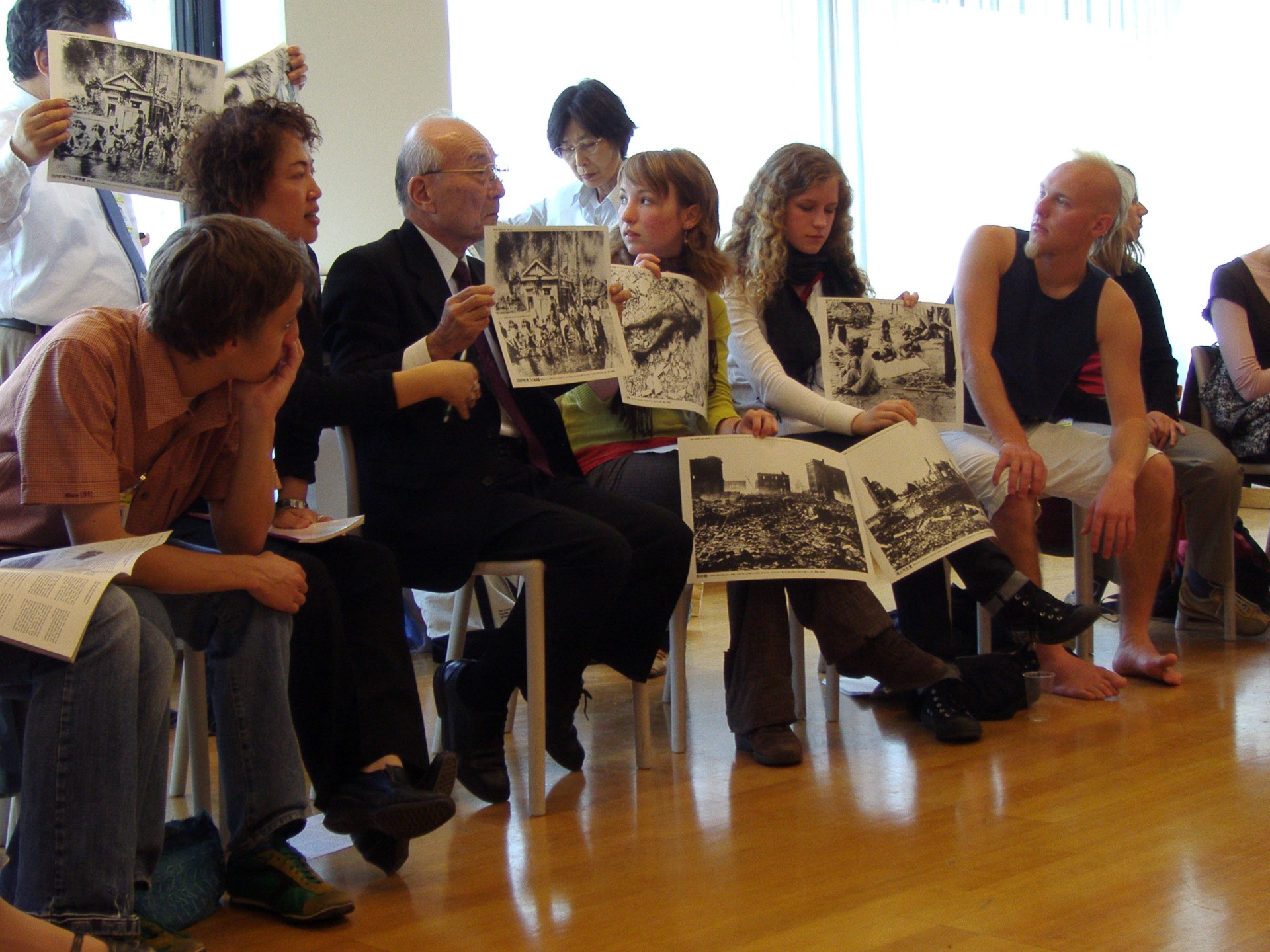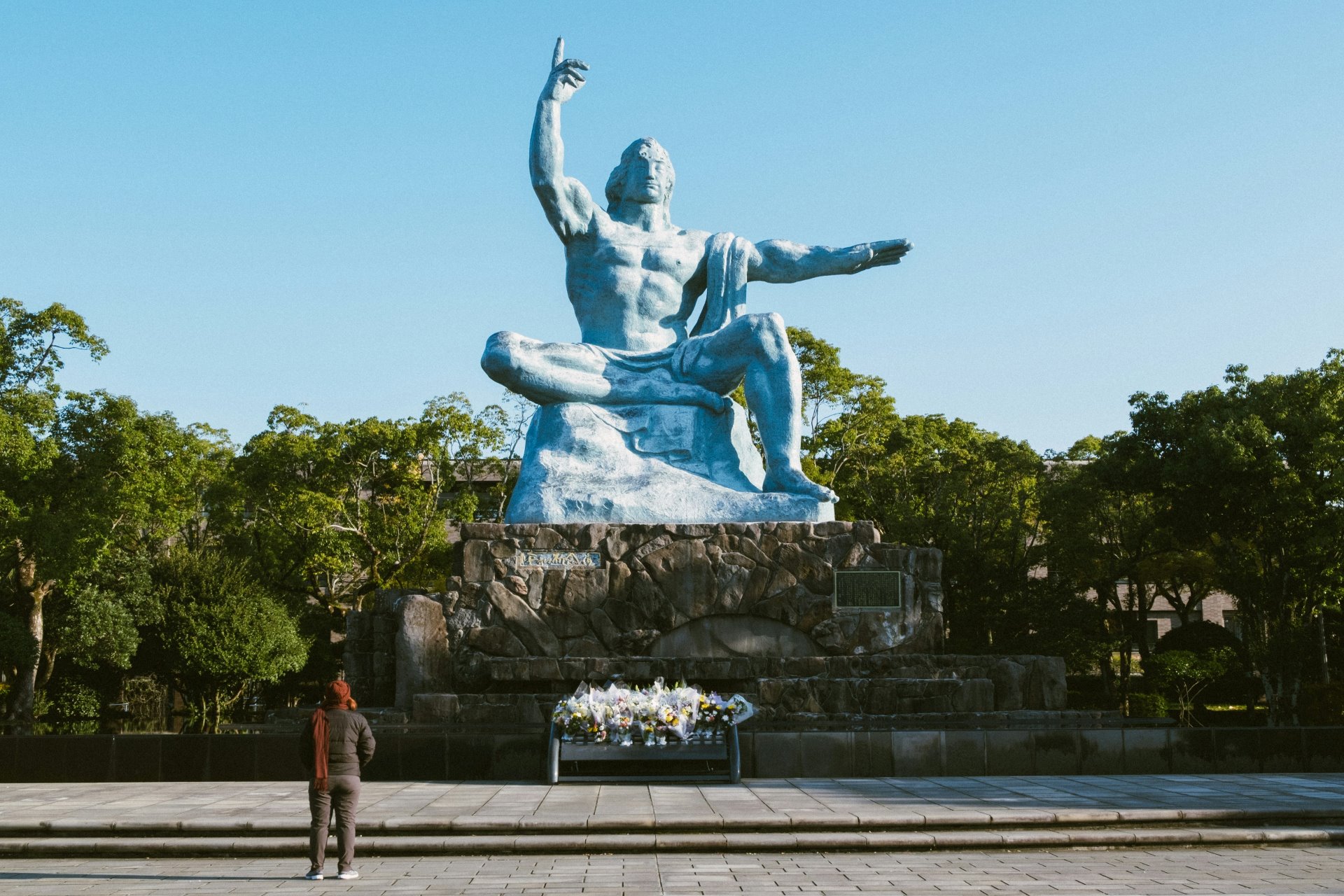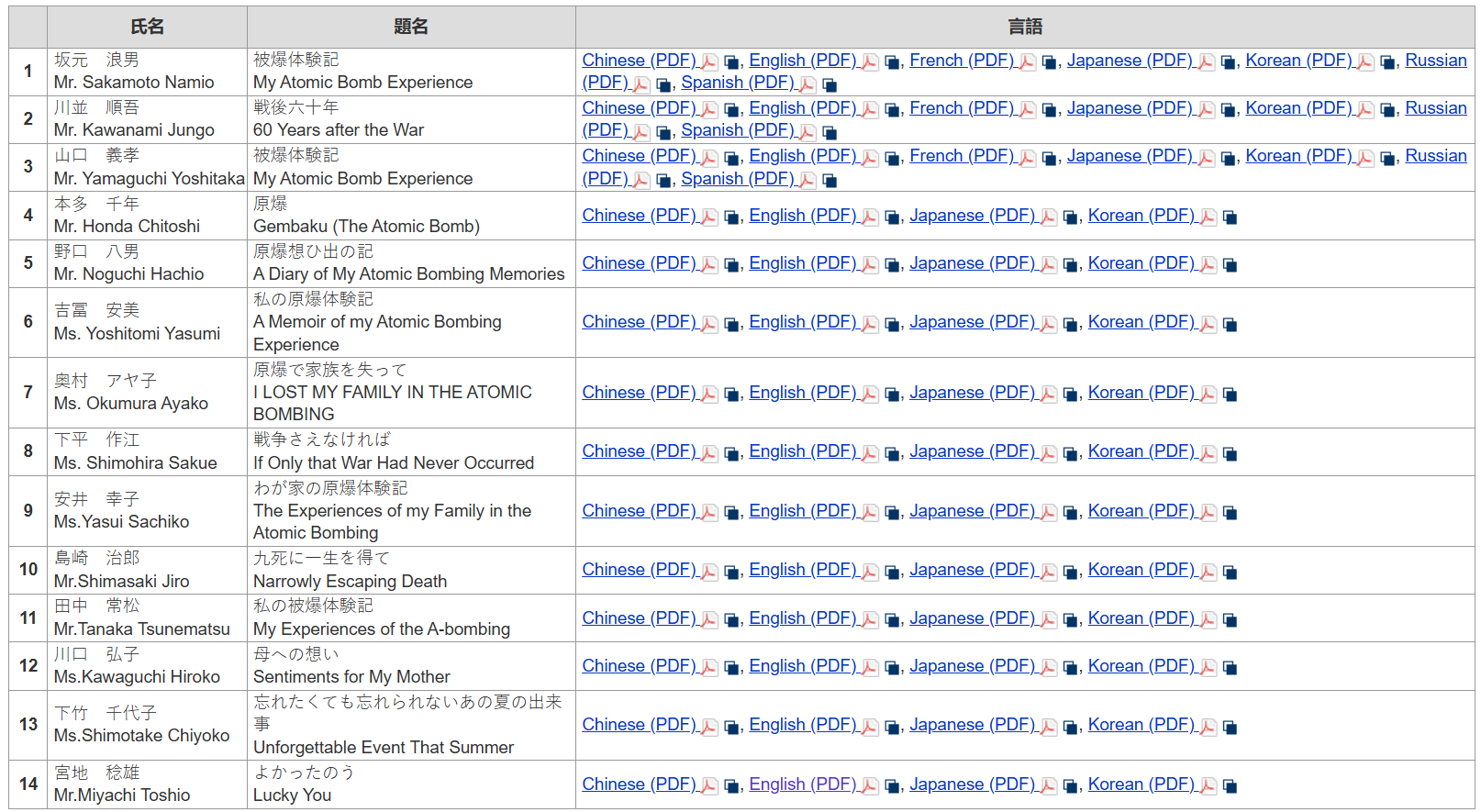A Legacy of Peace for People and Planet
Who are the Nihon Hidankyo, and what does nuclear disarmament mean for the environment?
Studying nuclear strategy in university, we were told that the best position to be in the case of atomic bombing was within two kilometres of the point of contact, killed immediately in the blast.
Nuclear war is unbearable violence. It is reminiscent of the understanding you reach watching the (anti)war film “Come and See” (1985), where you pity the survivors….First, for bearing witness to such horrors, and then, for having to continue living in the world that allowed all this to happen.
The hibakusha of Japan have been through unimaginable pain, their suffering difficult to give justice to, hard to encapsulate into words. They are the survivors of the devastating American atomic bombings of the cities Hiroshima and Nagasaki in 1945, having faced apocalyptic tragedy and harsh discrimination in the years following. Since then, many have dedicated their lives to fighting for a peaceful world of nuclear disarmament and non-proliferation of weapons, as part of the Nihon Hidankyo, or the Japan Confederation of A- and H-Bomb Sufferers Organisations.
Nobel Peace Prize win
In October 2024, the Nihon Hidankyo organization was awarded the Nobel Peace Prize. Their press statement reads, “Grateful that we have been awarded the 2024 Nobel Peace Prize, we take the prize very seriously and pledge to work even harder, with the hope of passing on our work to the younger generation.”

Their work began after the decade-long “dark era” following the end of World War II, when the hibakusha were finally able to speak about the atrocities which they had faced, and which they continued to endure. Under the post-war American occupation of Japan, the hibakusha were censored, their experiences strictly suppressed. The hibakusha lived without national recognition, compensation, or effective medical relief. When the Nihon Hidankyo was founded in 1956, their message to the world stated, “…we vow to save human beings from crisis through our experience as we heal and save ourselves.”
Nihon Hidankyo’s memory activism and witness testimonies are deeply moving for audiences, and incredibly powerful in shaping the public notions of nuclear weaponry.
Since then, Hidankyo delegations have travelled the world, informing citizens about the horrors inflicted upon them by nuclear weapon use. Their memory activism and witness testimonies are deeply moving for audiences, and incredibly powerful in shaping the public notions of nuclear weaponry.
Healing and saving themselves and others
When the atomic bombs hit the cities, the entire communities, and its landscape, suffered immensely. The surrounding environment of the bombing was destroyed. Nuclear and thermal radiation set what was left on fire. The bombs caused the death of tens of thousands, from the explosion, wounds, and radiation poisoning.
The environmental impact and health consequences of nuclear weapons are grave at every stage of production and use. The mining of materials is extractive, posing multiple hazardous health risks for workers and nearby communities. Nuclear testing throughout the 20th century has left many areas around the world contaminated even today. Weapons are stored, using resources and taking up space, but get lost too. The explosion itself is highly destructive. The following radioactive pollution poisons the atmosphere, the soil, and marine environments. The International Campaign Against Nuclear Weapons (ICAN) additionally reports ocean acidification, ozone layer damage, and a ‘nuclear winter’ that affects the land for years after the blast.
The fights against nuclear proliferation and the climate crisis are deeply intertwined. Environmental warfare exacerbates the climate crisis, which then makes communities more vulnerable, and aggravates conflict. Likewise, in terms of prevention and care, the ethics which govern nuclear strategy and climate change mitigation are the same. Humanity, inextricable from a safe and healthy natural world, are centred.
The fight continues
There have been no nuclear weapons deployed in war since the bombings of Nagasaki and Hiroshima in 1945, due in part to the tireless effort of the hibakusha.
However, we still live in a world with nuclear weapons and nuclear threats, and activism carries on. Discourse revolves around taking steps towards reduction, not elimination. Existing policy must be strengthened. The new START nuclear arms reduction treaty between the United States and Russia has been suspended. NATO’s sharing policy enables its member countries to host weapons if desired. The Treaty on the Prohibition of Nuclear Weapons (TPNW) is missing signatures, including Japan’s.

In response to the Hidankyo Nobel win, another anti-war group, the Shinshu War Materials Centre in the Nagano Prefecture, who archive historical materials including objects from the atomic bombings to promote peace, announced, “We are very pleased, but we also strongly urge the Japanese government, which has only given us formal talks and ignored us, to sign and ratify the Treaty on the Prohibition of Nuclear Weapons.” The government is not motivated to sign the TPNW as Japan still enjoys relative assured safety under the American nuclear umbrella, following its occupation.
Without disarmament, strategic stability is the closest thing a nuclear world can get to peace. Nuclear weapons are most useful in foreign policy as symbolic threats to leverage power. The threat of retaliation is the only guarantee, and the prediction is more important than the fact.
This logic of deterrence is the method of choice for nuclear nations, claiming that hoarding them is a form of protection. However, Dr Ivana Nikolić Hughes, President of the Nuclear Age Peace Foundation, says that she “would completely reject this characterization of nuclear deterrence.” She emphasises “the need to shift our thinking from ‘national interests’ to ‘humanity’s interests.’”
Environmental warfare exacerbates the climate crisis, which then makes communities more vulnerable, and aggravates conflict.
As a warning, the Bulletin of the Atomic Scientists runs a Doomsday Clock, in which they use “the imagery of apocalypse (midnight) and the contemporary idiom of nuclear explosion (countdown to zero) to convey threats to humanity and the planet.” In 2019, it was two minutes to midnight, in 2022, 100 seconds.
This year, 2024, the clock was wound only 90 seconds, indicating a moment of “historic danger.” This is due to nuclear risk from countries engaged in war, and increasing pressure from the adverse effects of climate change. The clock can still be turned back, but it requires political reimagination.
Even without deployment, the presence of nuclear weapons influences security decisions. In response to Americans taking bold action to defend Israel, while failing to do the same over Ukrainian airspace, a senior American senate aide working on Ukraine policy told POLITICO in October 2024 “…we can take the risk of shooting down Iranian missiles over Israel without triggering direct war with Tehran that could lead to nuclear war.” Following the logic of deterrence, some have argued that if Iran possessed nuclear weapons, strategic stability could be reached. But that is not peace.

A Hiroshima hibakusha, Keiko Ogura, was eight years old when the bomb was dropped. An activist, storyteller, and Japanese-English interpreter, she gave her testimony at the G7 Summit in Hiroshima last year. She sent a message to Russian President Putin through an interview, “You don’t know what a nuclear weapon is, the reality of a nuclear weapon. So come here and see.”
The power of testimony and legacy
This article is written in Brussels, Belgium, in the shadow of the “peaceful atom”, the Atomium. The structure was built for a World’s Fair last century, overlooking the city, reminding us that it was uranium ore extracted from the Belgian Congo which made up the first atomic bombs. Since independence, the mine was shut down and the entrance filled with concrete. Still, nuclear history, and its atrocities, cannot be so easily covered up.
While the clocks tick on, the Nihon Hidankyo speak, they advocate. The youth of today are the last generation to be able to learn from them directly. Testimonies of the hibakusha are digitally preserved, available for download in a myriad of languages. As witnesses to the darkest hours of human history, the survivors “help us somehow understand the incomprehensible suffering caused by nuclear weapons.”
Looking out the window, the Atomium is a memento mori, a reminder that the legacy of nuclear weaponry is the sustained suffering of the hibakusha, which should drive us to protect who is left.